MaryAnn Bernal's Blog, page 192
March 6, 2015
Impressive Tomb of Celtic Prince Found in France
by Rossella Lorenzi Discovery News
 An Iron Age Celtic prince lay buried with his chariot at the center of a huge mound in the Champagne region of France, according to the country’s National Archaeological Research Institute (Inrap).
An Iron Age Celtic prince lay buried with his chariot at the center of a huge mound in the Champagne region of France, according to the country’s National Archaeological Research Institute (Inrap).
Standing near the small village of Lavau, in northwestern France, the mound, 130 feet across, has been dated to the 5th century BC. The 2,500-year-old tomb has at its center a 150-square-foot burial chamber, housing the deceased and his chariot.
“This exceptional tomb contains unique funerary artifacts, which are fitting for one of the highest elite of the end of the first Iron Age,” Inrap, who has been excavating the site since October last year, said in a statement.
Photos: Excavating a Celtic Prince's Tomb
The major find so far has been a large bronze-decorated wine cauldron, most likely made by Greek or Etruscan craftsmen.
The cauldron measures about 3.2 feet in diameter and has four circular handles which are decorated with bronze heads that depict the Greek god Acheloos. The river deity is represented horned, bearded, with ears of a bull and a triple mustache.
More decorations are found around the edge of the cauldron. These include eight lioness heads.
Chariots, Gold Found at Bronze-Age Burial Site
Inside the cauldron, the archaeologists found a ceramic wine vessel, called oniochoe, decorated with black figures. Decorations include the god Dionysus, lying under a vine and facing a woman.
“It’s likely a banqueting scene, which is a recurring theme in Greek iconography,” Inrap said.
The Greco-Latin wine set, the northernmost found so far, is typical of an aristocratic Celtic banquet.
The wine cauldron not only represents the deceased’s wealth and power — it also reflects the growing interaction between the Celtic elites and the Mediterranean world, Inrap said.
Intricate Treasures From Stonehenge Burial: Photos
Between the end of the 6th century and the beginning of the 5th century BC, Greek and Etruscan city-states, in particularly Marseille, experienced strong economic growth.
Mediterranean traders, seeking slaves, metals and other precious goods such as amber, came into contact with continental Celts who controlled the main communication routes along the Seine, Rhône, Saône, Rhine and Danube.
The Celts greatly benefited from the exchanges.Some of their prestigious objects of Greek and Etruscan origin have been found in other monumental mounds in Heuneburg and Hochdorf, in Germany, and in Bourges and Vix, France.
Excavation at the site is expected to finish at the end of the month.
Image: Lioness head on the edge of the wine cauldron. Credit: Denis Gliksman/Inrap
 An Iron Age Celtic prince lay buried with his chariot at the center of a huge mound in the Champagne region of France, according to the country’s National Archaeological Research Institute (Inrap).
An Iron Age Celtic prince lay buried with his chariot at the center of a huge mound in the Champagne region of France, according to the country’s National Archaeological Research Institute (Inrap).Standing near the small village of Lavau, in northwestern France, the mound, 130 feet across, has been dated to the 5th century BC. The 2,500-year-old tomb has at its center a 150-square-foot burial chamber, housing the deceased and his chariot.
“This exceptional tomb contains unique funerary artifacts, which are fitting for one of the highest elite of the end of the first Iron Age,” Inrap, who has been excavating the site since October last year, said in a statement.
Photos: Excavating a Celtic Prince's Tomb
The major find so far has been a large bronze-decorated wine cauldron, most likely made by Greek or Etruscan craftsmen.
The cauldron measures about 3.2 feet in diameter and has four circular handles which are decorated with bronze heads that depict the Greek god Acheloos. The river deity is represented horned, bearded, with ears of a bull and a triple mustache.
More decorations are found around the edge of the cauldron. These include eight lioness heads.
Chariots, Gold Found at Bronze-Age Burial Site
Inside the cauldron, the archaeologists found a ceramic wine vessel, called oniochoe, decorated with black figures. Decorations include the god Dionysus, lying under a vine and facing a woman.
“It’s likely a banqueting scene, which is a recurring theme in Greek iconography,” Inrap said.
The Greco-Latin wine set, the northernmost found so far, is typical of an aristocratic Celtic banquet.
The wine cauldron not only represents the deceased’s wealth and power — it also reflects the growing interaction between the Celtic elites and the Mediterranean world, Inrap said.
Intricate Treasures From Stonehenge Burial: Photos
Between the end of the 6th century and the beginning of the 5th century BC, Greek and Etruscan city-states, in particularly Marseille, experienced strong economic growth.
Mediterranean traders, seeking slaves, metals and other precious goods such as amber, came into contact with continental Celts who controlled the main communication routes along the Seine, Rhône, Saône, Rhine and Danube.
The Celts greatly benefited from the exchanges.Some of their prestigious objects of Greek and Etruscan origin have been found in other monumental mounds in Heuneburg and Hochdorf, in Germany, and in Bourges and Vix, France.
Excavation at the site is expected to finish at the end of the month.
Image: Lioness head on the edge of the wine cauldron. Credit: Denis Gliksman/Inrap
Published on March 06, 2015 08:09
History Trivia - birth of Cyrano de Bergerac
March 6
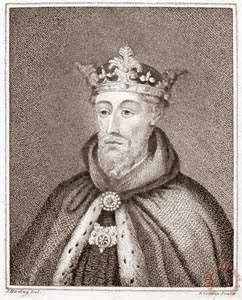
1340 John of Gaunt, 1st Duke of Lancaster was born.

1475 Michelangelo Buonarrotti was born.
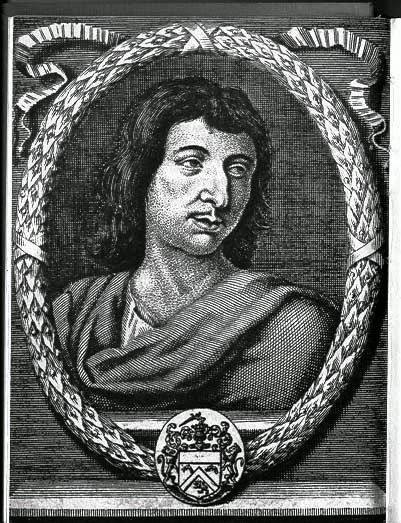
1619 Cyrano de Bergerac was born. The real Cyrano was a soldier, duelist, dramatist and satirist, and inspired several romantic legends, the most famous of them Edmund Rostand's play.

1340 John of Gaunt, 1st Duke of Lancaster was born.

1475 Michelangelo Buonarrotti was born.

1619 Cyrano de Bergerac was born. The real Cyrano was a soldier, duelist, dramatist and satirist, and inspired several romantic legends, the most famous of them Edmund Rostand's play.
Published on March 06, 2015 02:00
March 5, 2015
Book Launch - Stormy Fronts by D.G. Turner now available on Amazon
 It is the will to survive. The need to live for another day and to be on top of the food chain.
It is the will to survive. The need to live for another day and to be on top of the food chain. Against the backdrop of a futuristic ice age, Ariu, the Wild One, known for his volatile temper met Buko, the dark-skin, at the Meeting House and a strong friendship was forged. Both knew they had to go their own way if they needed to survive. Ariu had no plans until an empathetic traveller with her livestock entered the House. While the occupants wanted to consume the cattle, Ariu acted being a hero and tried to save them from being on the day's menu...wrong move. He found himself outside on the brink of death.
Torn between the safe haven and the desire to look for the fabled land the 'Green', Buko struck up an unlikely alliance with Naomi, Joshua and David, who held the secret of ancient philosophy in the form of a disc. The delicate web of lies obscures the fragile line between the past and future, with human relationships grasping to maintain trust, a luxury that no one can afford.
With this disc and a treasure chest found in the tunnels, will Buko and Ariu discover the hidden answers to the encroaching ice age?
Amazon US
Amazon UK
Published on March 05, 2015 07:35
History Trivia - Roman Emperor Julian attacks the Sassanid (Persian) Empire
March 5
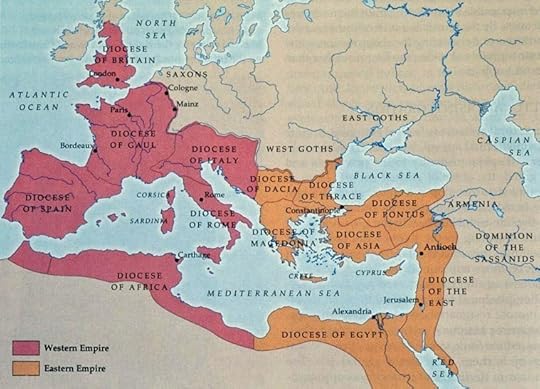
363 Roman Emperor Julian attacked the Sassanid (Persian) Empire with an army of 90,000in a campaign which would bring about his own death.

493 the German barbarian leader Odovacar (Odocacer), who had ended the Western Roman Empire in 476, was executed at age 59 by the Ostrogoths.
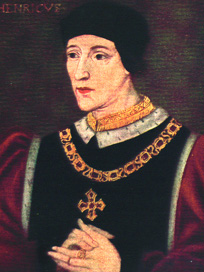
1461 Henry VI was deposed by Duke of York during the War of the Roses.

363 Roman Emperor Julian attacked the Sassanid (Persian) Empire with an army of 90,000in a campaign which would bring about his own death.

493 the German barbarian leader Odovacar (Odocacer), who had ended the Western Roman Empire in 476, was executed at age 59 by the Ostrogoths.

1461 Henry VI was deposed by Duke of York during the War of the Roses.
Published on March 05, 2015 02:00
March 4, 2015
Japan's WW2 'Musashi battleship wreck found'
BBC News
 The Musashi came under sustained attack by waves of US aircraft in October 1944
The Musashi came under sustained attack by waves of US aircraft in October 1944
American billionaire Paul Allen has announced the discovery of the famous World War Two Japanese battleship, the Musashi, more than 70 years after it was sunk by US forces.
Mr Allen said the vessel was found by his private exploration team.
It was at a depth of more than 1km (3,280ft) on the floor of the Sibuyan Sea off the Philippines.
The Musashi and its sister vessel, the Yamato, were two of the largest battleships ever built.
US warplanes sank the Musashi on 24 October 1944 during the Battle of Leyte Gulf, believed to be the biggest naval encounter of World War Two in which American and Australian forces defeated the Japanese.
 Photos of parts of the Musashi have been released on Mr Allen's Twitter account, including this image of a valve
Photos of parts of the Musashi have been released on Mr Allen's Twitter account, including this image of a valve
 This photo is said by Mr Allen to show part of the bow of the Musashi
This photo is said by Mr Allen to show part of the bow of the Musashi
Mr Allen announced the discovery on his Twitter page, which also showed photos of the submerged vessel.
He began his search for the Musashi eight years ago, "because since my youth I have been fascinated with Second World War history," he was quoted by CNBC as saying.
The Musashi was found in the middle of the Philippine archipelago using an Autonomous Underwater Vehicle (AUV) after Mr Allen's team had carried out a thorough survey of the seabed.
Attacking aircraft
The Musashi was a "mighty battleship" with "mammoth 18-inch guns", the US Navy's website says.
Its twin ship, the Yamato, was damaged in the fighting, according to the US Navy, and American warships finally sank it a year later as it tried to get to Okinawa.
 The Musashi came under sustained attack by waves of US aircraft in October 1944
The Musashi came under sustained attack by waves of US aircraft in October 1944 American billionaire Paul Allen has announced the discovery of the famous World War Two Japanese battleship, the Musashi, more than 70 years after it was sunk by US forces.
Mr Allen said the vessel was found by his private exploration team.
It was at a depth of more than 1km (3,280ft) on the floor of the Sibuyan Sea off the Philippines.
The Musashi and its sister vessel, the Yamato, were two of the largest battleships ever built.
US warplanes sank the Musashi on 24 October 1944 during the Battle of Leyte Gulf, believed to be the biggest naval encounter of World War Two in which American and Australian forces defeated the Japanese.
 Photos of parts of the Musashi have been released on Mr Allen's Twitter account, including this image of a valve
Photos of parts of the Musashi have been released on Mr Allen's Twitter account, including this image of a valve  This photo is said by Mr Allen to show part of the bow of the Musashi
This photo is said by Mr Allen to show part of the bow of the Musashi Mr Allen announced the discovery on his Twitter page, which also showed photos of the submerged vessel.
He began his search for the Musashi eight years ago, "because since my youth I have been fascinated with Second World War history," he was quoted by CNBC as saying.
The Musashi was found in the middle of the Philippine archipelago using an Autonomous Underwater Vehicle (AUV) after Mr Allen's team had carried out a thorough survey of the seabed.
Attacking aircraft
The Musashi was a "mighty battleship" with "mammoth 18-inch guns", the US Navy's website says.
Its twin ship, the Yamato, was damaged in the fighting, according to the US Navy, and American warships finally sank it a year later as it tried to get to Okinawa.
Published on March 04, 2015 05:05
History Trivia - Yorkists defeat the Lancastrians at Towton
March 4

1215 King John of England made an oath to Pope Innocent III as a crusader to gain his support.
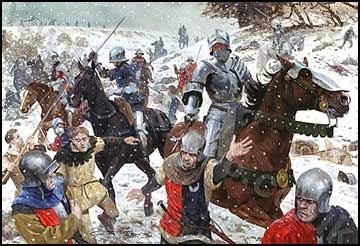
1461 Battle at Towton: Yorkists defeated the Lancastrians and Edward IV was recognized as king of England.
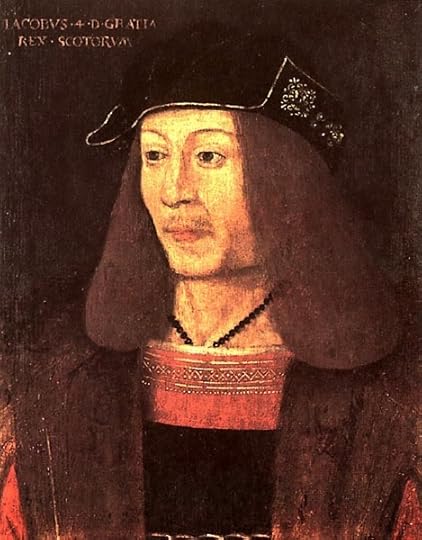
1492 King James IV of Scotland concluded an alliance with France against England.

1215 King John of England made an oath to Pope Innocent III as a crusader to gain his support.

1461 Battle at Towton: Yorkists defeated the Lancastrians and Edward IV was recognized as king of England.

1492 King James IV of Scotland concluded an alliance with France against England.
Published on March 04, 2015 02:00
March 3, 2015
Hundreds of Medieval Bodies Found Under Paris Supermarket
by Tia GhoseLive Science

Several mass burials, including a room where 150 bodies were buried in a mass grave, were recently unearthed beneath a Paris supermarket.
Denis Gliksman, Inrap More than 200 bodies were recently unearthed in several mass burials beneath a Paris supermarket.
The bodies, which were lined up head to feet, were found at the site of an ancient cemetery attached to the Trinity Hospital, which was founded in the 13th century.
Though it's not clear exactly how these ancient people died, the trove of bodies could reveal insights into how people in the Middle Ages buried their dead during epidemics or famine, the researchers involved said.
7 Weird Things Found in and Under Parking LotsSupermarket renovations
The burials were discovered during renovations to the basement of the Monoprix Réaumur-Sébastopol supermarket, located in the second-arrondissement neighborhood of Paris. As workers lowered the floor level of the basement, they found a shocking surprise: the bodies of men, women and children, neatly arranged in what looked to be mass graves. [See Images of the Ancient Hospital Burials]
The site was once the location of the Trinity Hospital, which was founded in 1202 by two German noblemen. The hospital was conceived not just as a place to provide care for the sick, but also as one where weary pilgrims and travelers could rest and enjoy themselves, according to a 1983 presentation given at the French Society on the History of Medicine.
But in 1353, during the height of the Black Death, the hospital also opened a cemetery, which provided a lucrative side business for the religious folk who operated the hospital, according to the presentation. During that catastrophic period, hundreds of people a day died in the Hôtel-Dieu de Paris, the city's oldest hospital, and burial space was tough to find in the crowded city. Occasionally, the overflow bodies were buried at the Trinity Hospital site, according to the presentation.
Mass death
So far, archaeologists have uncovered about eight mass burial pits on different levels of the site. Seven of those sites hold between five and 20 individuals, while the remaining pit contains more than 150 bodies, according to a statement about the findings.
The bodies were laid down methodically in neat rows, head to feet, with one burial extending beyond the boundaries of the excavation. The pits contain the skeletons of men and women, old and young, none of which show obvious signs of injury or disease.
Given the huge number of skeletons found, it seems likely the bodies were buried during some mass medical crisis, when too many people were dying at once to provide individual burials, the researchers note in the statement.
As a follow-up, the team plans to use radioactive isotopes of carbon (elements of carbon with different numbers of neutrons) to estimate when these people lived. By combining this data with ancient texts and maps of Medieval Paris, researchers hope to reveal how and when these people died.In the 1500s, the Trinity Hospital converted to a site where little boys and girls trained as apprentices. By the 1700s, the site fell into disrepair. During the French Revolution, the hospital was destroyed and the remaining structures were turned into stables for animals, according to the presentation.

Several mass burials, including a room where 150 bodies were buried in a mass grave, were recently unearthed beneath a Paris supermarket.
Denis Gliksman, Inrap More than 200 bodies were recently unearthed in several mass burials beneath a Paris supermarket.
The bodies, which were lined up head to feet, were found at the site of an ancient cemetery attached to the Trinity Hospital, which was founded in the 13th century.
Though it's not clear exactly how these ancient people died, the trove of bodies could reveal insights into how people in the Middle Ages buried their dead during epidemics or famine, the researchers involved said.
7 Weird Things Found in and Under Parking LotsSupermarket renovations
The burials were discovered during renovations to the basement of the Monoprix Réaumur-Sébastopol supermarket, located in the second-arrondissement neighborhood of Paris. As workers lowered the floor level of the basement, they found a shocking surprise: the bodies of men, women and children, neatly arranged in what looked to be mass graves. [See Images of the Ancient Hospital Burials]
The site was once the location of the Trinity Hospital, which was founded in 1202 by two German noblemen. The hospital was conceived not just as a place to provide care for the sick, but also as one where weary pilgrims and travelers could rest and enjoy themselves, according to a 1983 presentation given at the French Society on the History of Medicine.
But in 1353, during the height of the Black Death, the hospital also opened a cemetery, which provided a lucrative side business for the religious folk who operated the hospital, according to the presentation. During that catastrophic period, hundreds of people a day died in the Hôtel-Dieu de Paris, the city's oldest hospital, and burial space was tough to find in the crowded city. Occasionally, the overflow bodies were buried at the Trinity Hospital site, according to the presentation.
Mass death
So far, archaeologists have uncovered about eight mass burial pits on different levels of the site. Seven of those sites hold between five and 20 individuals, while the remaining pit contains more than 150 bodies, according to a statement about the findings.
The bodies were laid down methodically in neat rows, head to feet, with one burial extending beyond the boundaries of the excavation. The pits contain the skeletons of men and women, old and young, none of which show obvious signs of injury or disease.
Given the huge number of skeletons found, it seems likely the bodies were buried during some mass medical crisis, when too many people were dying at once to provide individual burials, the researchers note in the statement.
As a follow-up, the team plans to use radioactive isotopes of carbon (elements of carbon with different numbers of neutrons) to estimate when these people lived. By combining this data with ancient texts and maps of Medieval Paris, researchers hope to reveal how and when these people died.In the 1500s, the Trinity Hospital converted to a site where little boys and girls trained as apprentices. By the 1700s, the site fell into disrepair. During the French Revolution, the hospital was destroyed and the remaining structures were turned into stables for animals, according to the presentation.
Published on March 03, 2015 07:19
History Trivia - Ostrogoten King Theodorik the Great defeats German usurper Odoaker
March 3

493 Ostrogoten King Theodorik the Great and viceroy of the Eastern Roman Empire beat German usurper Odoaker who had made himself King of Italy.
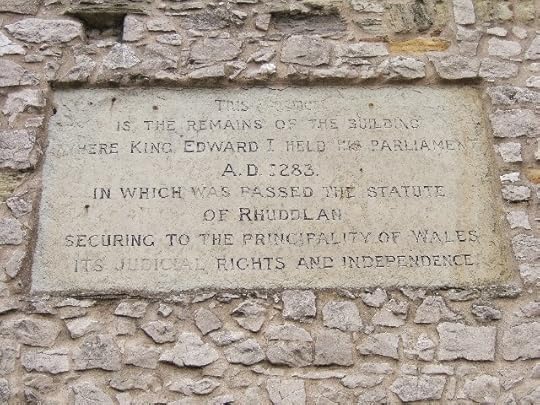
1284 The Statute of Rhuddlan (Statute of Wales) incorporated the Principality of Wales into England, and provided the constitutional basis for the government of the Principality of North Wales from 1284 until 1536.

493 Ostrogoten King Theodorik the Great and viceroy of the Eastern Roman Empire beat German usurper Odoaker who had made himself King of Italy.

1284 The Statute of Rhuddlan (Statute of Wales) incorporated the Principality of Wales into England, and provided the constitutional basis for the government of the Principality of North Wales from 1284 until 1536.
Published on March 03, 2015 02:00
March 2, 2015
Richard III Festival - March 6 - March 14 2015 - Gloucester U.K.
Richard III Festival

After the success of last year’s Festival we are back this year with an even better program of talks. Featuring talks with Professors from the University of Leicester, visitors can expect to hear all the expert findings directly from those who have published the research. Details of all talks below, follow the links to purchase tickets online. Please note that new talks will be added so check back for up to date details.
6th – 14th March
Friday 6th March
‘Richard III: the King under the car park’, with Mathew Morris
Mathew Morris, Greyfriars site director, presents the latest research from the search for Richard III. Tickets £7.50 per person.
7pm, City Museum CLICK HERE| to purchase tickets online, or telephone (01452) 396131.
Saturday 7th March
'CSI Richard III: Analysis of the King's Bones', with Sarah Hainsworth
11am, City Museum Tickets £7.50 per person.
CLICK HERE| to purchase tickets online for this talk, or telephone (01452) 396131.
‘Richard III: the genetics, the genealogy and is it actually him?’, with Dr Turi King
Hear Dr Turi King take us through the genetics and genealogy behind the Richard III case, and demonstrate how you can extract DNA from a non-Medieval banana!
1.30pm, City Museum. Tickets £7.50 per person.
CLICK HERE| to purchase tickets online
‘‘R’ Almost Marked the Spot – Filming the Search for Richard III’, with Carl Vivian
As a video producer for the University of Leicester Carl Vivian was asked to record the Search for Richard III from the moment the ground was broken at the Greyfriars site to the final announcement that confirmed the identity of the remains.
The images taken over the six month project is a unique record of the event and has been used in three Channel 4 films, to illustrate the City Council's King Richard III Visitor Centre and by News Broadcasters from all over the world.
In this short talk Carl Vivian picks out some of the highlights of the project illustrated with material that’s never been broadcast and concludes with a look at what’s happened on the project since that historic announcement on 4th February 2013. Tickets £7.50 per person.
3.30pm, City Museum CLICK HERE| to purchase tickets online, or telephone (01452) 396131.
Tuesday 10th March
‘Music in the Age of Richard III’, talk with Cllr Sebastian Field
Richard III's lifetime (1452-1485) saw a remarkable development in English music. Composers such as John Dunstable and John Plummer were leading this development, which flowered in the reign of Henry VII with the Eton Choirbook. Professional singer and Gloucester City Councillor Sebastian Field traces the origins of medieval polyphony and the growth of English music, particularly during the reign of King Richard III. The talk will be illustrated with recorded musical examples. Tickets £7.50 per person.
7pm, Gloucester Guildhall CLICK HERE| to purchase tickers online, or telephone (01452) 503050
Friday 13th March
Richard III – Walking Tour of the City Centre, tour with Christine Morgan
Follow in Richard's footsteps to look at some of the buildings he would have seen and visited during his stay in Gloucester and hear about the background to and purpose of his visit which was part of his royal progress in the area. Tour lasts approximately one hour, maximum of 20 people. Tickets £4 each.
2pm, Meeting at the City Museum CLICK HERE| to purchase tickets online or telephone (01452) 396131
‘Richard III, Tudor Propaganda and the Judgement of History’ – Choral Concert
The programme will include Sumer is Icumen in, the earliest known piece of English polyphony, the beautiful medieval carol There is no Rose, and Pastime with Good Company, allegedly written by Henry VIII. The concert will feature vocal music performed by the Sine Nomine Youth Choir, instrumental music from IatB Ensemble, and solo songs performed by Sebastian and Vicki Field, accompanied by members of IatB. Narrator Chris Chatterton, former Mayor of Gloucester, will tell the story of this much maligned Plantagenet King, and how his reputation has waxed and waned under the Tudor propagandists and after.
CLICK HERE| to purchase tickets for this event
7pm – 9.30pm, St Nicholas Church This event will include a 30 minute interval in which mulled wine and cakes will be served over the road at the Gloucester Folk Museum. A special rate £10 ticket is available if you’d like to include refreshments. Please note that refreshments are NOT available on the night without a pre-booked ticket. PLEASE REMEMBER to bring a thick coat - the church can get very cold!
Saturday 14th March ‘‘’Tis but a scratch”, the reality of 15th century Warfare’, with Bob Woosnam-Savage
Medieval arms and armour, and particularly that of the 15th century often conjures up wonderful images of knights and men-at-arms in shining armour together with, what appear to be almost fantastic displays of superb heraldry, perhaps in the form of painted silken banners and ostrich feather panache’s and plumes. Join Bob Woosnam-Savage, Curator of European Edged Weapons at the Royal Armouries in Leeds, as he takes us on an interesting journey. Warning: Contains adult content and images some viewers my find distressing. Tickets £7.50 per person.
10.30am, City Museum CLICK HERE| to purchase your tickets online or telephone (01452) 396131.
‘Richard III’s Heir? – The Dublin King’, with Dr Louis-John Ashdown-Hill
In 1486 – just a year after Henry VII had killed Richard III at the battle of Bosworth and seized the crown - a young man claiming to be a Richard’s heir appeared, to oust the usurper and reclaim the throne for the legitimate royal family. In 1487, he was crowned King of England in Dublin’s cathedral. So who was this boy? Henry VII’s government officially announced that he was an imposter called Lambert Simnel, son of a craftsman from Oxford. But late fifteenth-century Continental and Irish writers insisted that he was Edward, Earl of Warwick, son of Richard III’s brother, the Duke of Clarence. Whoever he was, he had the backing of key members of the Yorkist royal family. In his talk (and in his latest book) John Ashdown-Hill offers new and intriguing evidence regarding the identity of THE DUBLIN KING. Tickets £7.50 per person.
12pm, City Museum
CLICK HERE| to purchase your tickets online or telephone (01452) 396131.
‘Shakespeare and the Remains of Richard III’, with Professor Philip Schwyzer
This talk will be followed by a book signing featuring the publication of the same name. Tickets £7.50 per person.
2pm, City Museum CLICK HERE| to purchase tickets for this event.
Events may be added to the programme above any day, so please check back regularly to make sure you don't miss out.
 Gloucester
Gloucester

After the success of last year’s Festival we are back this year with an even better program of talks. Featuring talks with Professors from the University of Leicester, visitors can expect to hear all the expert findings directly from those who have published the research. Details of all talks below, follow the links to purchase tickets online. Please note that new talks will be added so check back for up to date details.
6th – 14th March
Friday 6th March
‘Richard III: the King under the car park’, with Mathew Morris
Mathew Morris, Greyfriars site director, presents the latest research from the search for Richard III. Tickets £7.50 per person.
7pm, City Museum CLICK HERE| to purchase tickets online, or telephone (01452) 396131.
Saturday 7th March
'CSI Richard III: Analysis of the King's Bones', with Sarah Hainsworth
11am, City Museum Tickets £7.50 per person.
CLICK HERE| to purchase tickets online for this talk, or telephone (01452) 396131.
‘Richard III: the genetics, the genealogy and is it actually him?’, with Dr Turi King
Hear Dr Turi King take us through the genetics and genealogy behind the Richard III case, and demonstrate how you can extract DNA from a non-Medieval banana!
1.30pm, City Museum. Tickets £7.50 per person.
CLICK HERE| to purchase tickets online
‘‘R’ Almost Marked the Spot – Filming the Search for Richard III’, with Carl Vivian
As a video producer for the University of Leicester Carl Vivian was asked to record the Search for Richard III from the moment the ground was broken at the Greyfriars site to the final announcement that confirmed the identity of the remains.
The images taken over the six month project is a unique record of the event and has been used in three Channel 4 films, to illustrate the City Council's King Richard III Visitor Centre and by News Broadcasters from all over the world.
In this short talk Carl Vivian picks out some of the highlights of the project illustrated with material that’s never been broadcast and concludes with a look at what’s happened on the project since that historic announcement on 4th February 2013. Tickets £7.50 per person.
3.30pm, City Museum CLICK HERE| to purchase tickets online, or telephone (01452) 396131.
Tuesday 10th March
‘Music in the Age of Richard III’, talk with Cllr Sebastian Field
Richard III's lifetime (1452-1485) saw a remarkable development in English music. Composers such as John Dunstable and John Plummer were leading this development, which flowered in the reign of Henry VII with the Eton Choirbook. Professional singer and Gloucester City Councillor Sebastian Field traces the origins of medieval polyphony and the growth of English music, particularly during the reign of King Richard III. The talk will be illustrated with recorded musical examples. Tickets £7.50 per person.
7pm, Gloucester Guildhall CLICK HERE| to purchase tickers online, or telephone (01452) 503050
Friday 13th March
Richard III – Walking Tour of the City Centre, tour with Christine Morgan
Follow in Richard's footsteps to look at some of the buildings he would have seen and visited during his stay in Gloucester and hear about the background to and purpose of his visit which was part of his royal progress in the area. Tour lasts approximately one hour, maximum of 20 people. Tickets £4 each.
2pm, Meeting at the City Museum CLICK HERE| to purchase tickets online or telephone (01452) 396131
‘Richard III, Tudor Propaganda and the Judgement of History’ – Choral Concert
The programme will include Sumer is Icumen in, the earliest known piece of English polyphony, the beautiful medieval carol There is no Rose, and Pastime with Good Company, allegedly written by Henry VIII. The concert will feature vocal music performed by the Sine Nomine Youth Choir, instrumental music from IatB Ensemble, and solo songs performed by Sebastian and Vicki Field, accompanied by members of IatB. Narrator Chris Chatterton, former Mayor of Gloucester, will tell the story of this much maligned Plantagenet King, and how his reputation has waxed and waned under the Tudor propagandists and after.
CLICK HERE| to purchase tickets for this event
7pm – 9.30pm, St Nicholas Church This event will include a 30 minute interval in which mulled wine and cakes will be served over the road at the Gloucester Folk Museum. A special rate £10 ticket is available if you’d like to include refreshments. Please note that refreshments are NOT available on the night without a pre-booked ticket. PLEASE REMEMBER to bring a thick coat - the church can get very cold!
Saturday 14th March ‘‘’Tis but a scratch”, the reality of 15th century Warfare’, with Bob Woosnam-Savage
Medieval arms and armour, and particularly that of the 15th century often conjures up wonderful images of knights and men-at-arms in shining armour together with, what appear to be almost fantastic displays of superb heraldry, perhaps in the form of painted silken banners and ostrich feather panache’s and plumes. Join Bob Woosnam-Savage, Curator of European Edged Weapons at the Royal Armouries in Leeds, as he takes us on an interesting journey. Warning: Contains adult content and images some viewers my find distressing. Tickets £7.50 per person.
10.30am, City Museum CLICK HERE| to purchase your tickets online or telephone (01452) 396131.
‘Richard III’s Heir? – The Dublin King’, with Dr Louis-John Ashdown-Hill
In 1486 – just a year after Henry VII had killed Richard III at the battle of Bosworth and seized the crown - a young man claiming to be a Richard’s heir appeared, to oust the usurper and reclaim the throne for the legitimate royal family. In 1487, he was crowned King of England in Dublin’s cathedral. So who was this boy? Henry VII’s government officially announced that he was an imposter called Lambert Simnel, son of a craftsman from Oxford. But late fifteenth-century Continental and Irish writers insisted that he was Edward, Earl of Warwick, son of Richard III’s brother, the Duke of Clarence. Whoever he was, he had the backing of key members of the Yorkist royal family. In his talk (and in his latest book) John Ashdown-Hill offers new and intriguing evidence regarding the identity of THE DUBLIN KING. Tickets £7.50 per person.
12pm, City Museum
CLICK HERE| to purchase your tickets online or telephone (01452) 396131.
‘Shakespeare and the Remains of Richard III’, with Professor Philip Schwyzer
This talk will be followed by a book signing featuring the publication of the same name. Tickets £7.50 per person.
2pm, City Museum CLICK HERE| to purchase tickets for this event.
Events may be added to the programme above any day, so please check back regularly to make sure you don't miss out.
 Gloucester
Gloucester
Published on March 02, 2015 11:34
Coffin-Within-a-Coffin Opened at Richard III Grave
by Rossella Lorenzi Discovery News
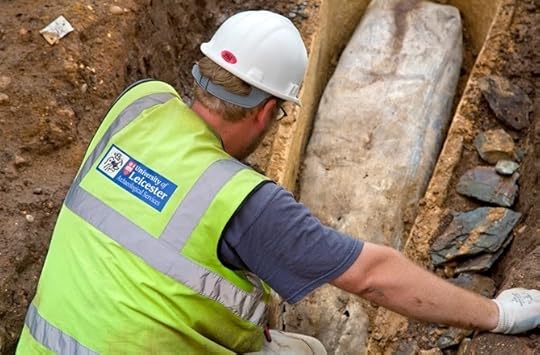 The lead coffin as it was unearthed.
The lead coffin as it was unearthed.
University of Leicester A mysterious lead coffin found close to King Richard III’s grave beneath a parking lot in Leicester, England, contained the skeleton of an elderly woman, archaeologists at Leicester University announced today.
Featuring an inlaid crucifix, carefully soldered on all sides but with feet sticking out of the bottom, the lead coffin was discovered inside a larger limestone sarcophagus in August 2013 . The discovery came one year after the battle-scarred remains of the last Plantagenet king of England — the family ruled vast areas of Europe — were unearthed.
Radiocarbon dating suggests the lady in the lead casket might have died as late as 1400, although it's much more likely she was buried in the last half of the 13th century — long before Richard III’s death at the Battle of Bosworth.
PHOTOS: Mystery Coffin Revealed at Richard III Site
Although her sarcophagus was the first intact medieval stone coffin unearthed in the area, it wasn’t the only grave found at the site. Nine other burials were identified beneath the car park, which was basically the site of Grey Friars Church, the medieval friary of the Franciscans known to have been Richard III’s final resting place.
Established in around 1250, the friary was demolished in 1538, as part of King Henry VIII’s Dissolution of the Monasteries.
“There is the potential for hundreds more burials elsewhere inside the church, the other friary buildings and outside in the cemetery,” said Grey Friars site director Mathew Morris, who led the dig.
The mysterious coffin-within-a-coffin prompted various speculations about the individual it contained. All suggested it was a male.
Coffin at King Richard III Site Holds…Another Coffin
The guessing game included two leaders of the English Grey Friars order -- Peter Swynsfeld, who died in 1272, and William of Nottingham, who died in 1330.
“We speculated that this grave might be for one of them. To find that it contained a woman was intriguing and to some extent frustrating for we know much less about the women associated with the friary than the men,” Morris told Discovery News.
Three graves exhumed out of the 10 found so far at the Grey Friars turned to contain female skeletons.
“The discovery is going to add important insights into the interaction of women and the religious orders in the medieval period,” Morris said.
Face of Richard III Reconstructed
He noted that statistically, the sample is too small to draw any conclusions to the significance of women’s presence at Grey Friars. Richard III, who will be reinterred in Leicester Cathedral on March 26, would certainly not have been the only male buried there during the friary’s 300 year history.
“After all, if we carried out more excavations it is possible that we could find that these are the only four women buried in the church,” Morris said.
Two graves inside the choir -- where Richard III was found -- contained wooden coffins and two females aged between 40 and 50 years-old. Radiocarbon dating indicate they died between 1270 and 1400.
One of the women likely had a congenital hip dislocation which forced her to walk with a crutch, while the other lived a life of hard physical labor, regularly using her arms and legs to lift heavy weights.
Medieval Church Discovered Beneath Parking Lot
Another female skeleton, believed to have died in her early to mid-20s, also led a life of hard physical work.
Analysis of the female remains, including the lady in the lead coffin, who was over 60 when she died, revealed that all four women had a highly varied, protein-rich diet including large amounts of sea fish. This indicates that they would have been wealthy, the archaeologists concluded.
“The friary’s main source of donations came from the town’s middle classes, merchants and tradespeople who were probably of more modest means, and worked for a living,” Morris said.
Buried in a prominent position in the church, the lady in the lead coffin was certainly enjoying a high social status.
All Hail King Richard! Details of Elaborate Burial Unveiled
“Use of lead in coffins in the medieval period, because of its expense, is often taken to indicate the individual’s wealth and power. We believe she was an important early benefactor of the Grey Friars,” Morris said.
There is also the possibility the lead coffin may have been used to transport the person from elsewhere in the country. According to Morris, this would again fit with the idea that she was a benefactor who wanted to be buried in a specific church.
“There was some damage to the underside of the coffin which might support the theory of her being transported some distance before burial,” Morris said.
He and his team are searching archive records trying to identify the skeleton. Documents dating back to the time of the burials name a lady called Emma, who was married to John of Holt and whose body was buried “in the Franciscan church in Leicester.”
But nothing more is known about Emma, what she looked like, her age at death or where in the friary church she was buried.
According to Morris, such a lack of fundamental information, coupled with no known descendants who can provide a DNA sample, make it impossible to say for certain whether one of these skeletons is that of Emma or indeed anyone else.
“Sadly, they will forever remain anonymous,” he said.
 The lead coffin as it was unearthed.
The lead coffin as it was unearthed.University of Leicester A mysterious lead coffin found close to King Richard III’s grave beneath a parking lot in Leicester, England, contained the skeleton of an elderly woman, archaeologists at Leicester University announced today.
Featuring an inlaid crucifix, carefully soldered on all sides but with feet sticking out of the bottom, the lead coffin was discovered inside a larger limestone sarcophagus in August 2013 . The discovery came one year after the battle-scarred remains of the last Plantagenet king of England — the family ruled vast areas of Europe — were unearthed.
Radiocarbon dating suggests the lady in the lead casket might have died as late as 1400, although it's much more likely she was buried in the last half of the 13th century — long before Richard III’s death at the Battle of Bosworth.
PHOTOS: Mystery Coffin Revealed at Richard III Site
Although her sarcophagus was the first intact medieval stone coffin unearthed in the area, it wasn’t the only grave found at the site. Nine other burials were identified beneath the car park, which was basically the site of Grey Friars Church, the medieval friary of the Franciscans known to have been Richard III’s final resting place.
Established in around 1250, the friary was demolished in 1538, as part of King Henry VIII’s Dissolution of the Monasteries.
“There is the potential for hundreds more burials elsewhere inside the church, the other friary buildings and outside in the cemetery,” said Grey Friars site director Mathew Morris, who led the dig.
The mysterious coffin-within-a-coffin prompted various speculations about the individual it contained. All suggested it was a male.
Coffin at King Richard III Site Holds…Another Coffin
The guessing game included two leaders of the English Grey Friars order -- Peter Swynsfeld, who died in 1272, and William of Nottingham, who died in 1330.
“We speculated that this grave might be for one of them. To find that it contained a woman was intriguing and to some extent frustrating for we know much less about the women associated with the friary than the men,” Morris told Discovery News.
Three graves exhumed out of the 10 found so far at the Grey Friars turned to contain female skeletons.
“The discovery is going to add important insights into the interaction of women and the religious orders in the medieval period,” Morris said.
Face of Richard III Reconstructed
He noted that statistically, the sample is too small to draw any conclusions to the significance of women’s presence at Grey Friars. Richard III, who will be reinterred in Leicester Cathedral on March 26, would certainly not have been the only male buried there during the friary’s 300 year history.
“After all, if we carried out more excavations it is possible that we could find that these are the only four women buried in the church,” Morris said.
Two graves inside the choir -- where Richard III was found -- contained wooden coffins and two females aged between 40 and 50 years-old. Radiocarbon dating indicate they died between 1270 and 1400.
One of the women likely had a congenital hip dislocation which forced her to walk with a crutch, while the other lived a life of hard physical labor, regularly using her arms and legs to lift heavy weights.
Medieval Church Discovered Beneath Parking Lot
Another female skeleton, believed to have died in her early to mid-20s, also led a life of hard physical work.
Analysis of the female remains, including the lady in the lead coffin, who was over 60 when she died, revealed that all four women had a highly varied, protein-rich diet including large amounts of sea fish. This indicates that they would have been wealthy, the archaeologists concluded.
“The friary’s main source of donations came from the town’s middle classes, merchants and tradespeople who were probably of more modest means, and worked for a living,” Morris said.
Buried in a prominent position in the church, the lady in the lead coffin was certainly enjoying a high social status.
All Hail King Richard! Details of Elaborate Burial Unveiled
“Use of lead in coffins in the medieval period, because of its expense, is often taken to indicate the individual’s wealth and power. We believe she was an important early benefactor of the Grey Friars,” Morris said.
There is also the possibility the lead coffin may have been used to transport the person from elsewhere in the country. According to Morris, this would again fit with the idea that she was a benefactor who wanted to be buried in a specific church.
“There was some damage to the underside of the coffin which might support the theory of her being transported some distance before burial,” Morris said.
He and his team are searching archive records trying to identify the skeleton. Documents dating back to the time of the burials name a lady called Emma, who was married to John of Holt and whose body was buried “in the Franciscan church in Leicester.”
But nothing more is known about Emma, what she looked like, her age at death or where in the friary church she was buried.
According to Morris, such a lack of fundamental information, coupled with no known descendants who can provide a DNA sample, make it impossible to say for certain whether one of these skeletons is that of Emma or indeed anyone else.
“Sadly, they will forever remain anonymous,” he said.
Published on March 02, 2015 06:45



